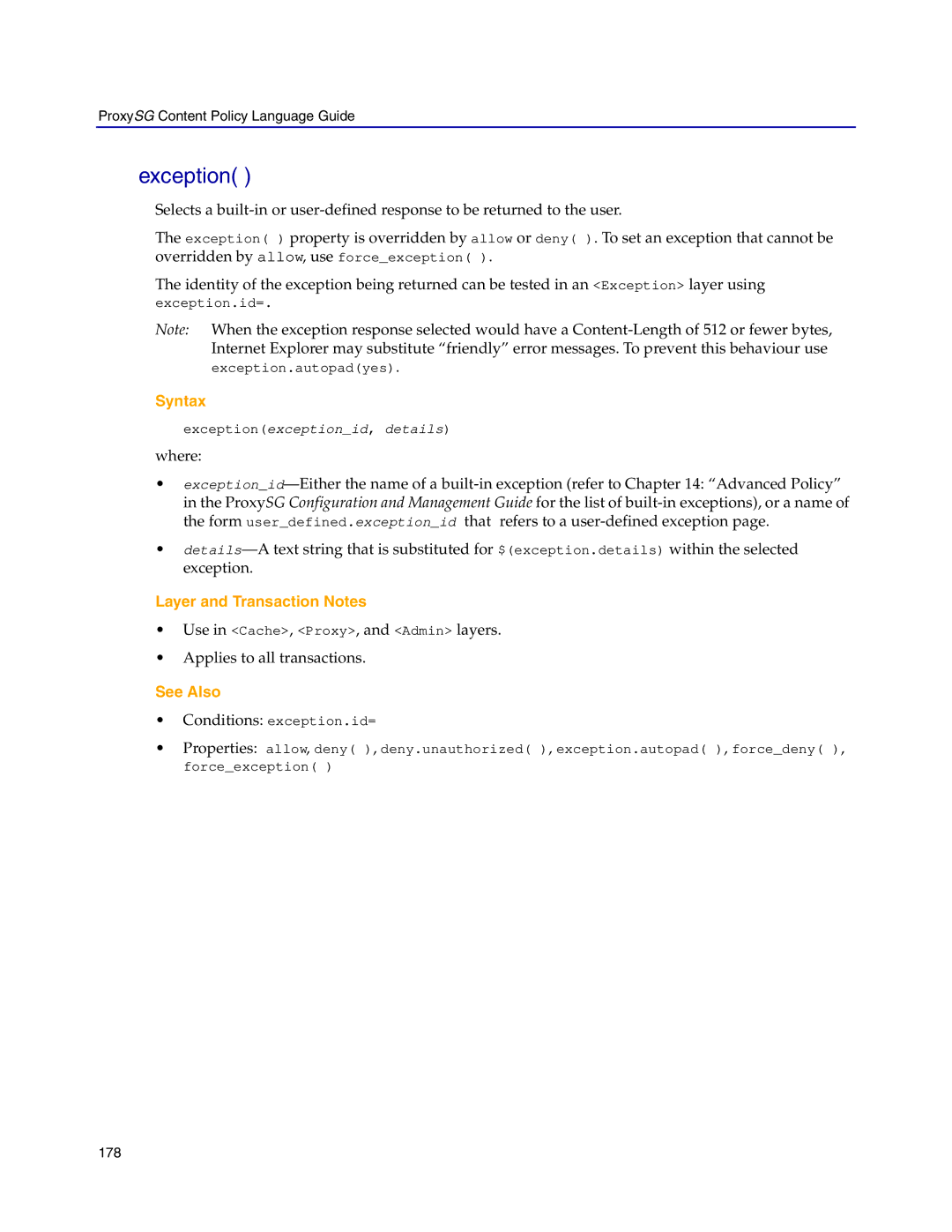ProxySG Content Policy Language Guide
exception( )
Selects a
The exception( ) property is overridden by allow or deny( ). To set an exception that cannot be overridden by allow, use force_exception( ).
The identity of the exception being returned can be tested in an <Exception> layer using
exception.id=.
Note: When the exception response selected would have a
exception.autopad(yes).
Syntax
exception(exception_id, details)
where:
•
•
Layer and Transaction Notes
•Use in <Cache>, <Proxy>, and <Admin> layers.
•Applies to all transactions.
See Also
•Conditions: exception.id=
•Properties: allow, deny( ), deny.unauthorized( ), exception.autopad( ), force_deny( ), force_exception( )
178
